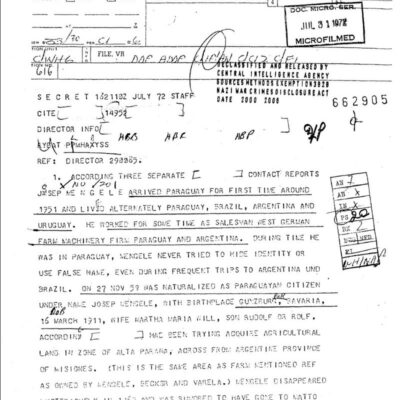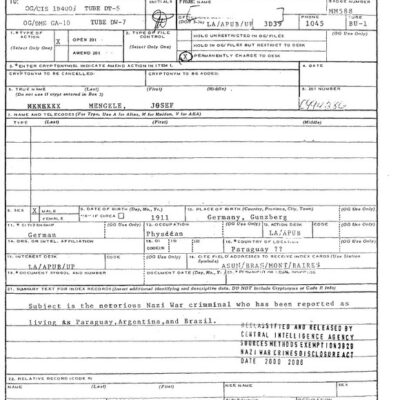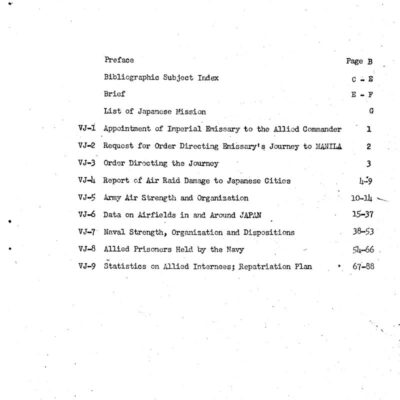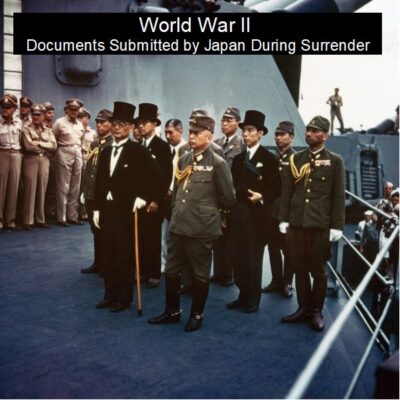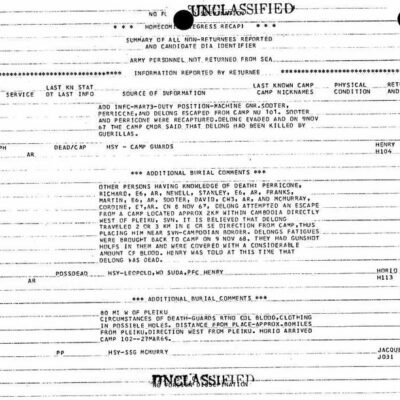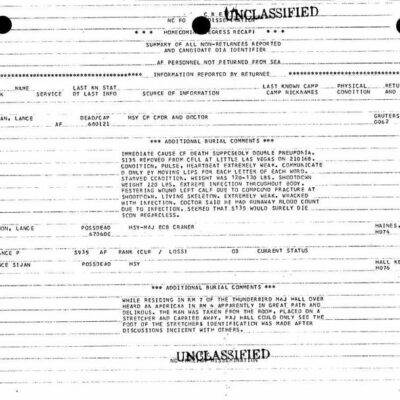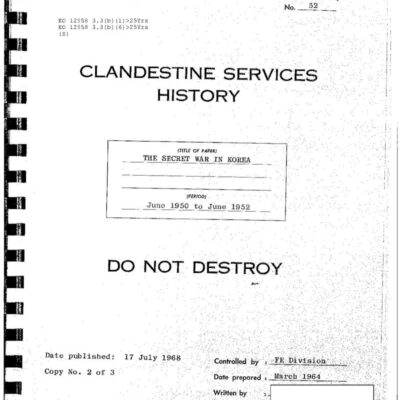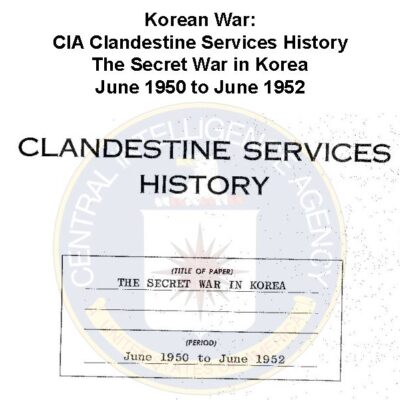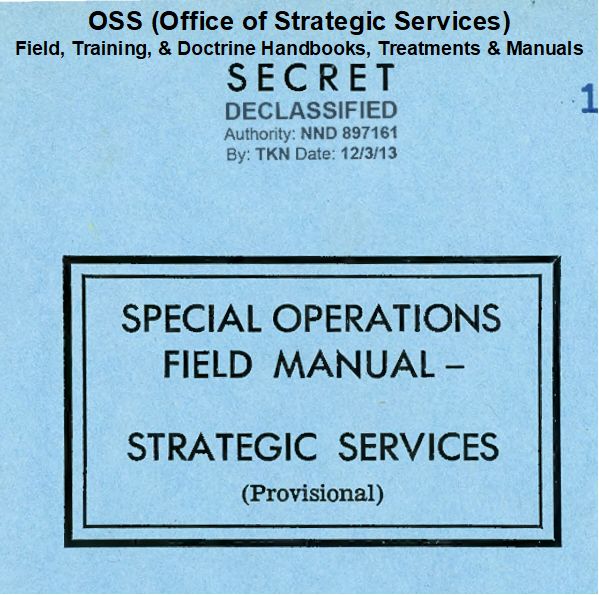
OSS Field, Training & Doctrine Manuals and Handbooks
$19.50
Category: War Files
Tags: world war 2, World War II, WW 2
Description
OSS Origins: Timeline and Key Figures
Pre-1940:
- Establishment of predecessor intelligence activities: While the OSS is founded during WWII, the concept of intelligence gathering and strategic operations exists prior, laying groundwork for its formation.
1940-1944 (World War II Era – Formation and Operations of OSS):
- June 1940 – August 1944: Vichy France Government in power. The period during which the “A Selected Who’s Who in Vichy, France” document covers the top personnel of the Nazi-collaborator French State.
- 1942: Organization of Communications Branch (OSS) established. This indicates early structuring of the OSS’s communication capabilities.
- 1943: Morale Operations Field Manual—Strategic Services (Provisional) (OSS) produced. This manual outlines methods for psychological warfare and undermining enemy morale.
- February 23, 1944: Special Operations Field Manual—Strategic Services (Provisional) (OSS) produced. This manual details operational principles for special operations.
- January 17, 1944: Simple Sabotage Manual (OSS) produced. This manual provides guidance on how ordinary citizens can perform acts of sabotage with minimal risk.
- June 1944: Office of Strategic Services (OSS) Weapons Instructions & Ordnance Catalog produced. This illustrated manual covers a wide range of weapons, explosives, and related devices for OSS operatives.
- 1944: Secret Intelligence Field Manual—Strategic Services (Provisional) (OSS) produced. This highly secret manual details operational principles, methods, and organization for secret intelligence gathering.
- 1944: Field Manual – Strategic Services (Provisional) (OSS) produced. This general field manual likely covers broader strategic services principles.
- 1944: Dissolution of the Nazi Party and its Affiliated Organizations – Civil Affairs Guide (OSS) produced. This guide was intended for post-war civil affairs planning related to dismantling Nazi structures.
- 1944: The Protestant and the Catholic Churches in Germany – Civil Affairs Guide (OSS) produced. Another civil affairs guide, likely for understanding and navigating religious institutions in Germany post-conflict.
- Throughout WWII: OSS training in National Parks. Various National Parks, including Catoctin Mountain Park, are converted into military camps for training spies, guerrilla leaders, saboteurs, and clandestine radio operators.
- Throughout WWII: OSS operations in Mediterranean, European, Pacific, and Far East Theaters. OSS personnel are infiltrated behind enemy lines to conduct espionage, sabotage, and other strategic operations.
Post-WWII (Focus on OSS Assessment and CIA Formation):
- 1945: Office of Strategic Services OSS Organization and Functions (OSS) produced. This document details the structure and responsibilities of the OSS as it existed near the end of the war.
- 1947: Assessment of Men – Selection of Personnel for the Office of Strategic Services (OSS Assessment Staff) published. This extensive report details the psychological and psychiatric methods used to evaluate and select OSS personnel, based on studies of 5,391 recruits.
- 1947: Japanese Social Structure (OSS) produced. This analytical document reflects the OSS’s continued intelligence gathering and analysis, even after the war’s conclusion.
- Post-WWII: Formation of the Central Intelligence Agency (CIA). The OSS is identified as a predecessor to the CIA, indicating a transition of intelligence functions.
Post-OSS Era (CIA Operations and Historical Documentation):
- 1950: CIA Operations Against Guerrilla Forces (CIA) manual produced. This manual reflects the CIA’s early focus on counter-insurgency operations.
- September 1963: CIA Handbook for Special Operations Sudan (CIA) produced. This document provides guidance for specific CIA operations in Sudan.
- 1966: CIA Intelligence Handbook for Special Operations Somali Republic (CIA) produced. Similar to the Sudan handbook, this focuses on operations in the Somali Republic.
- 1966: CIA Report: The Vietnamese Communists Will to Persist (CIA) produced. This report provides analysis during the Vietnam War.
- 1968: CIA Headquarters Handbook – Procedures for Domestic Courier Operations (CIA) produced. This handbook outlines internal procedures for secure document transfer.
- 2008: OSS Training in the National Parks and Service Abroad in World War II (National Park Service) published. This 712-page report provides a comprehensive historical account of OSS origins, training methods, and overseas operations.
Cast of Characters
The provided sources primarily describe organizations, manuals, and reports rather than specific individuals. However, one prominent individual and a collective group are mentioned:
- “Wild Bill” Donovan: The source explicitly names him in the context of “Wild Bill” Donovan and the Origins of the OSS.”
- Bio: A key figure in the establishment and early leadership of the Office of Strategic Services (OSS) during World War II. He is credited with leading the efforts to create America’s first centralized intelligence agency, which coordinated espionage, sabotage, and strategic information gathering behind enemy lines.
- OSS Assessment Staff: This collective body is responsible for the “Assessment of Men – Selection of Personnel for the Office of Strategic Services” report.
- Bio: A group primarily composed of psychologists and psychiatrists who developed and implemented novel assessment procedures for selecting men and women recruited for the Office of Strategic Services. Their work represented a pioneering effort in America to apply “organismic (Gestalt) principles” to predict human behavior for intelligence and military roles.
- Unspecified personnel of the Vichy government (June 1940-August 1944): The “A Selected Who’s Who in Vichy, France” lists “the top personnel of the Vichy government (the French State under Nazi collaborator control), diplomatic service, press, radio, and political parties.” While not individually named in the excerpt, they constitute a significant group of actors during World War II.
- Bio: Individuals who held prominent positions within the Vichy French government, which collaborated with Nazi Germany during its occupation of France from 1940 to 1944. These individuals were involved in the administration, diplomatic relations, and public communication of a state under significant foreign influence and control.










